Curry leaves and flax seeds podi -Incredibly versatile South Indian chutney podi — a dry condiment for dosas, idlis, and rice. Protein-rich flax seeds, mineral-loaded curry leaves (karuveppilai, for all our Tamil fam), and a blend of roasted dals, spices, and that magical hit of umami. It’s a South Indian gunpowder(the eating kinds!) with a modern twist — and it might just become your next pantry obsession.
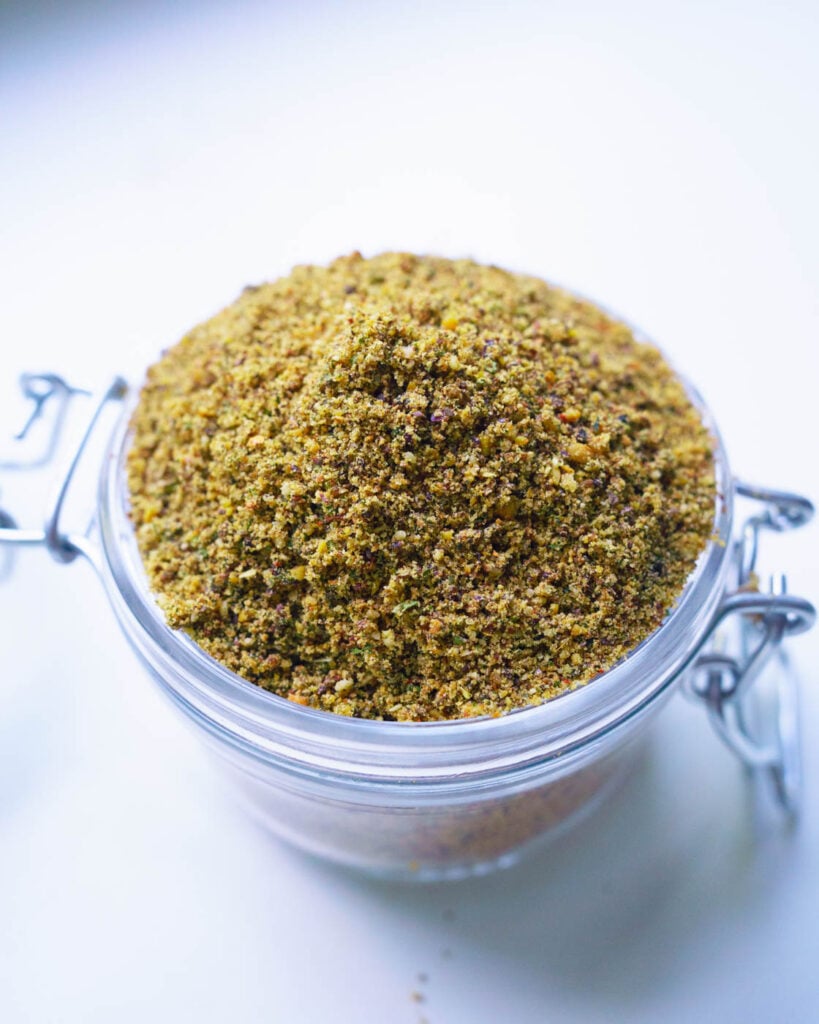
I still remember the first time I tasted curry leaf podi—it was my roommate’s secret stash. She casually mixed it into her rice with a spoonful of ghee, and I (thinking I was just trying “some powder thing”) took one bite and had my mind blown. It was earthy, spicy, deeply savory, and absolutely addictive. From that day on, I have been obsessed.
When I was packing my bags to move to the US, I shamelessly begged every auntie in my life for their signature podi blends. My suitcase smelled like curry leaves and roasted lentils before I even landed.
A big reason I started making my own version? I was trying to get more flax seeds into my diet—but I didn’t want to think about it. I wanted to sneak them into something so everyday, so routine, that I wouldn't have to make an extra effort to eat them. And bonus: curry leaves aren’t just delicious—they’re nutrient-dense little powerhouses packed with antioxidants, iron, and gut-friendly goodness. Put them together in a spicy podi? Now we’re talking easy nutrition with bold flavor.
Pro Tip
Roast each ingredient separately on low heat. They all have different cooking times—flax seeds pop quickly, while curry leaves need gentle crisping to avoid bitterness.
What's chutney podi
Podi has been around for centuries in South Indian cuisine. Born out of the need to preserve flavor in hot, humid climates, these dry spice mixes became a smart way to store nutrition and taste without refrigeration.
What makes podi so special is its simplicity. It’s a pantry staple in many Tamil, Telugu, and Kannada households — made in batches, stored in jars, and ready to sprinkle on anything and everything. Traditionally, podis vary by household — some like it fiery, others nutty, some garlicky, others mellow. And while the classic versions are often made with roasted dals and chilies, we’re cranking up the health game with flax seeds and fresh curry leaves, turning this humble powder into a flavor-packed, protein-dense, nutrient-rich sprinkle of joy.
It’s easy to make, even easier to store, and endlessly customizable. Whether you're meal-prepping, trying to eat more plant protein, or just want to zhuzh up your plate, this karuveppilai podi with flax seeds is the flavor hack you didn’t know you needed.
Let’s dive into how to make, eat, and never live without it again!
How to make curry leaves and flax seeds podi
Though the list is long, most ingredients are common in south indian pantries. You will need fresh or dried curry leaves, peanuts, flax seeds, spices, garlic, and dals. I have also added white sesame seeds in the podi, but you can choose to skip it.
The three main ingredients that give it's taste are asafoetida, tamarind and sugar.I chose to use jaggery, but you can also use white sugar.
The main work in this recipe is roasting all the ingredients. You need to be patient and do it slowly.Use a heavy bottomed pan like a cast iron or a stainless steel pan like this one.
Step 1: Roast the curry leaves
This is a perfect recipe to make when you have too many curry leaves. Wash the curry leaves and pat them dry with a paper towel. The less water there is, the faster the roasting process. The trick is to roast it on low heat, sautéing often till the leaves turn dry and change color.
This step will elongate the shelf life of the podi.
Try and roast everything separately. Though if you are impatient like me, batch similar-sized ingredients together.
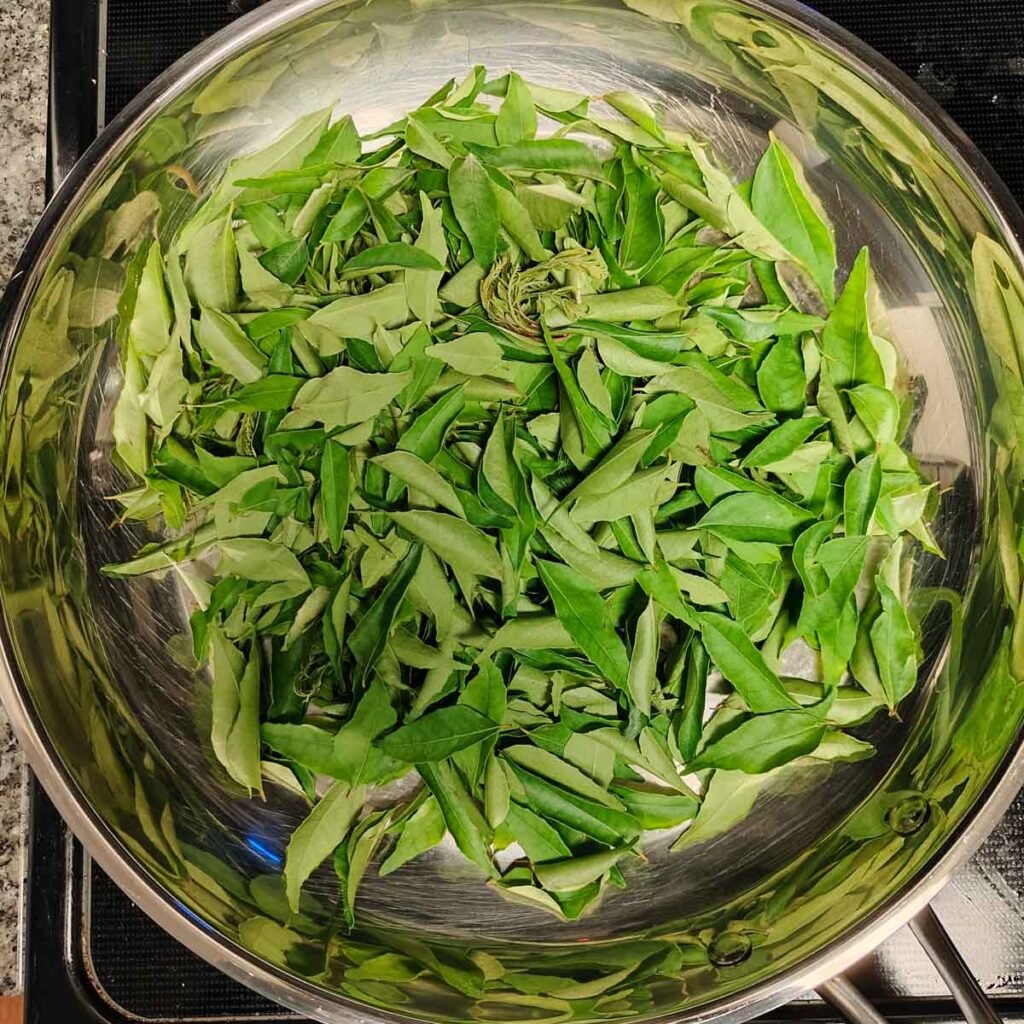
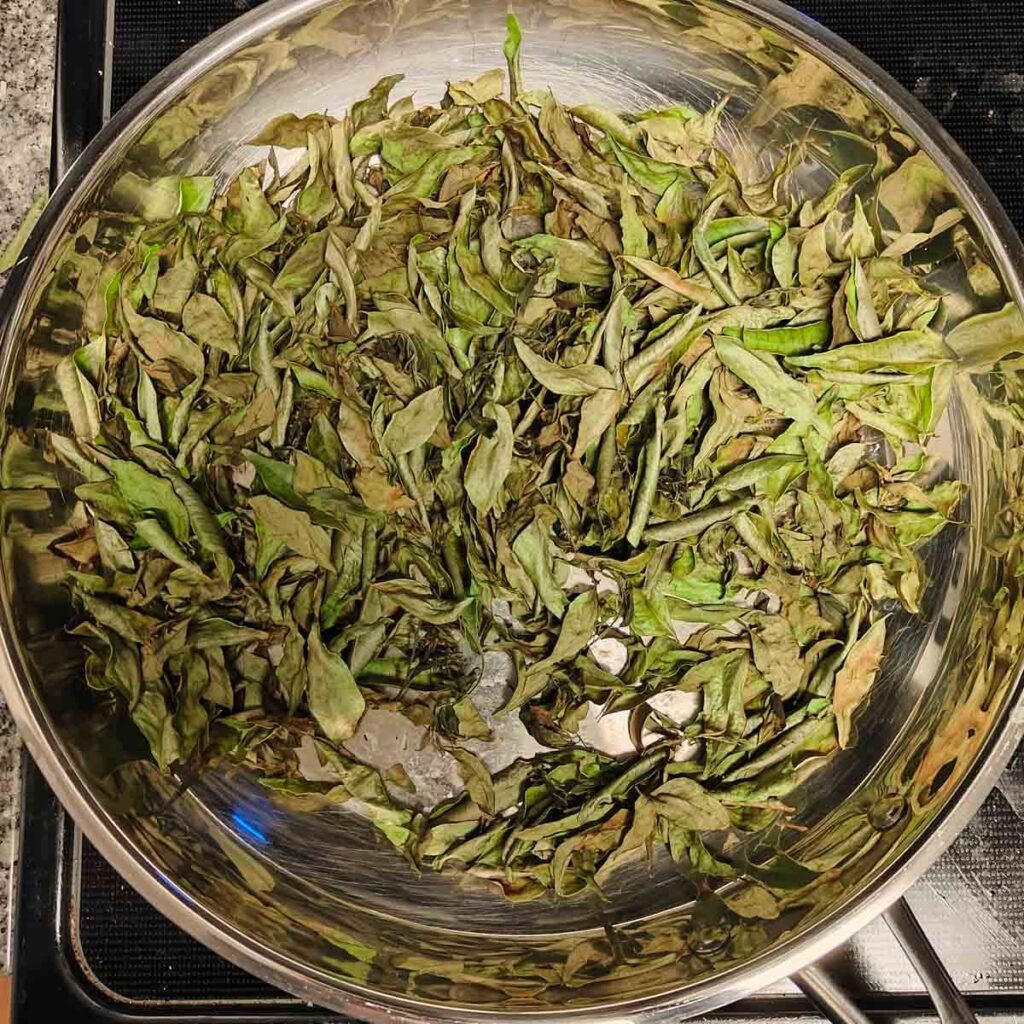
Step 2: Blend into a powder
Let all the ingredients come down to room temperature. Working in batches, blend the ingredients into a coarse powder.
Store in an air-tight container for 2-3 months without refrigeration.
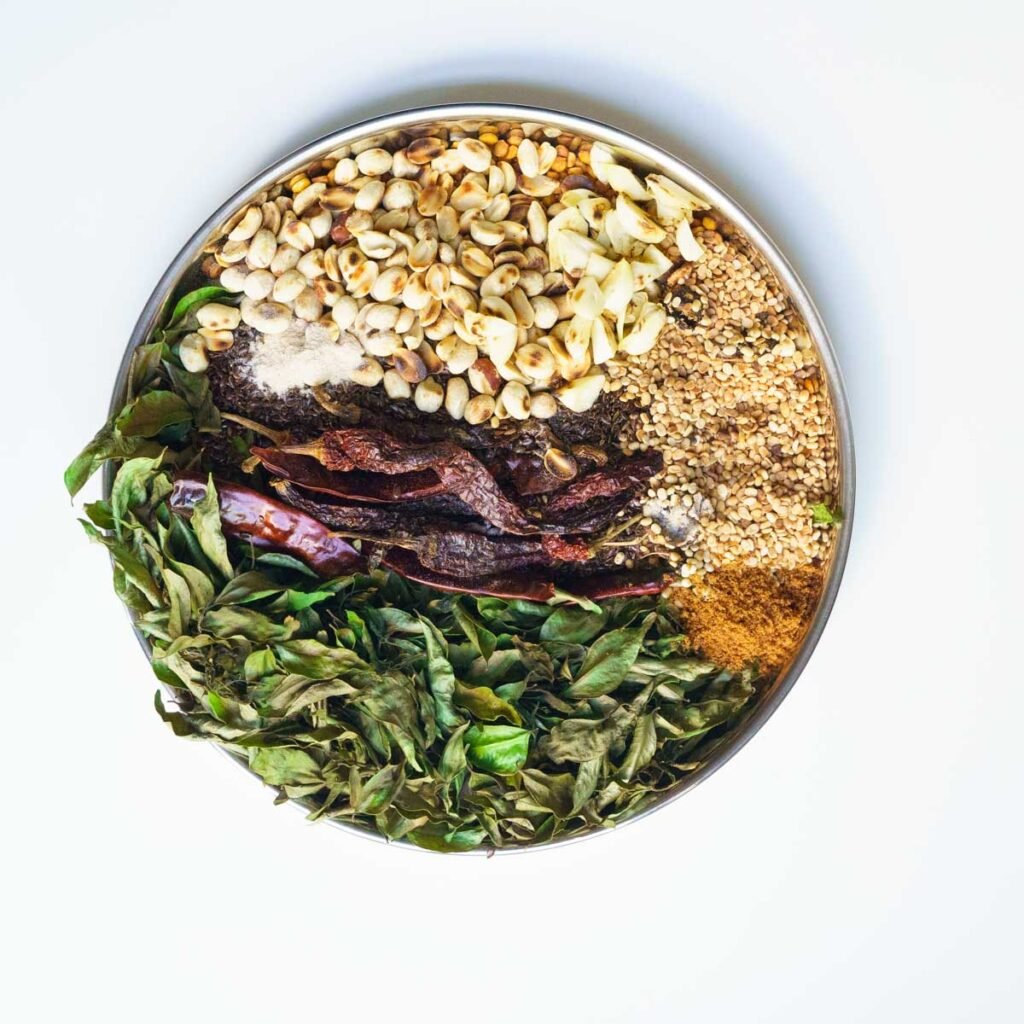
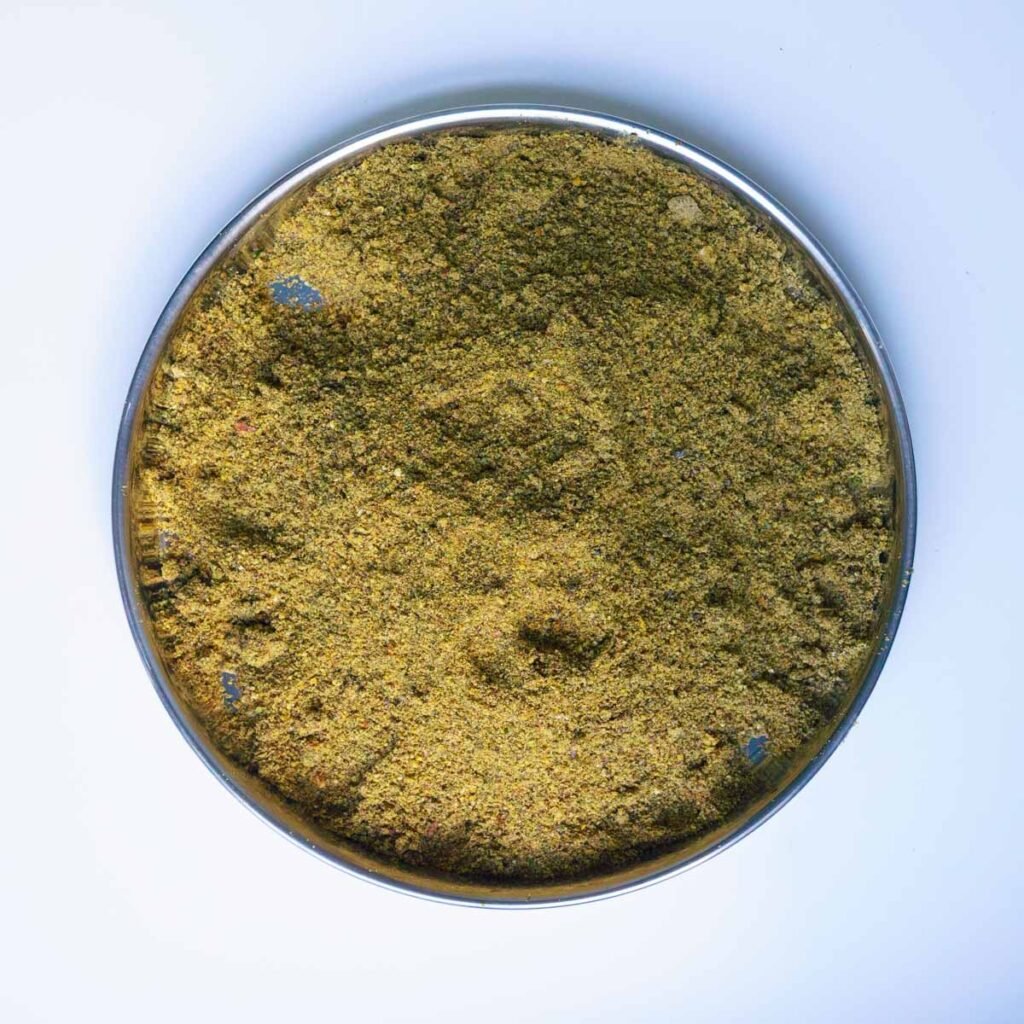
Now, with a sprinkle of flax seeds and the superfood power of curry leaves, we’re keeping the tradition alive — and making it even better.
Serving Curry leaves podi
There’s really no right or wrong way to eat this chutney podi. This is how I eat it-
- Sprinkle over dosa while cooking it. If you are trying to eat more protein, try making this high-protein tofu dosa instead.
- As a side to idlis or make stir-fried podi idlis with it.
- Mix 2 teaspoon with 1 teaspoon sesame oil/ghee, stir into warm rice, and boom — meal ready. I also add a few steamed vegetables and roasted peanuts for extra crunch.
- Stir into yogurt for a quick raita-like dip. I love eating this with parathas.
- Dust over roasted chickpeas or makhana for a protein snack.
- Roll leftover chapatis with this podi and oil — a quick lunchbox treat!
This is the podi I now sprinkle on everything: rice, dosa, toast, pasta, even popcorn. It’s spicy, smoky, and incredibly good for you.

Curry leaves and flax seeds idli podi
Equipment
- Heavy bottomed pan
Ingredients
- 3 Cups Curry leaves fresh, washed and dried
- ½ Cup Flax seeds
- ¼ Cup Peanuts
- ¼ Cup Channa Dal
- ¼ Cup Urad Dal
- 5-6 Garlic cloves
Spices
- ½ teaspoon Asafetida
- 8-10 Red chillies
- 1 ball Tamarind marble sized, dry tamarind or use dry green mango(amchur)
- 1 Tablespoon Jaggery
- Salt
Instructions
- Wash and dry the curry leaves with paper towel. The drier the leaves, the faster the roasting process.
- Dry roast them on a heavy bottomed pan for 10-15 minutes, on low heat, moving them around often.
- Dry roast other ingredients- peanuts, red chilies, sesame seeds and flax seeds ,dals, tamarind and garlic. The dals should turn fragarant and nutty. The peanuts should be crunchy inside.
- The garlic should be slow roasted from all sides.
- Let everything cool down.
- Add salt, asafetida and sugar(jaggery). These do not need to be roasted.
- Add the tamarind, chilies and peanuts to the blender first. Blend finely and then add rest of the ingredients.Blend till they are a powder.
- Taste and adjust the salt. The podi's spice level will reduce with time.
Notes
Why Roast
- Roasting coaxes out the nutty, earthy flavors from dals, flax seeds, and spices. It gives the podi that irresistible toasted aroma you smell before you taste.
- Roasting reduces the water content and increases the shelf life of this spice mix. Fresh ingredients like curry leaves and garlic should be roasted low and slow will they are well done.
- Roasted ingredients grind more evenly and create a better mouthfeel—no gritty bits here!
- Especially for ingredients like flax seeds and curry leaves, light roasting makes them easier to digest and absorb
Nutrition
Related
Here are some more south indian breakfast recipes
Frequently Asked Questions(FAQs)- idli podi
Curry leaf podi (also known as karuveppilai podi or curry leaves podi) is a South Indian dry chutney powder made with roasted curry leaves, lentils, spices, and sometimes nuts or seeds. It’s flavorful, aromatic, and usually served as a condiment with rice, dosa, or idli.
Yes! It’s designed to be sprinkled over everyday meals. Because it’s shelf-stable, flavorful, and packed with good-for-you ingredients, it’s a great way to effortlessly add nutrients to your daily diet.
It's best to roast flax seeds before grinding—they become more digestible, taste nuttier, and blend better into the podi.
Absolutely. Garlic adds depth, but you can skip it for a no-onion, no-garlic version. Just bump up the sesame seeds or add a pinch of asafoetida for extra flavor.
Flax seeds are rich in protein, fiber, and omega-3 fatty acids. They help support digestion, heart health, and hormonal balance—making them a powerful addition to your chutney podi.
Yes! Just adjust the spice level if needed. It’s a great way to sneak flax seeds and curry leaves into kids’ diets without them noticing.


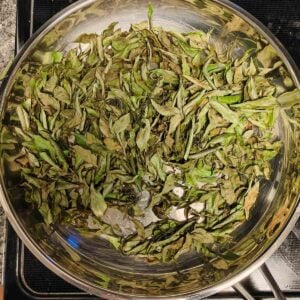

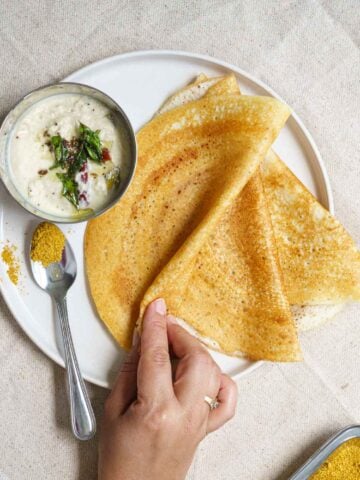
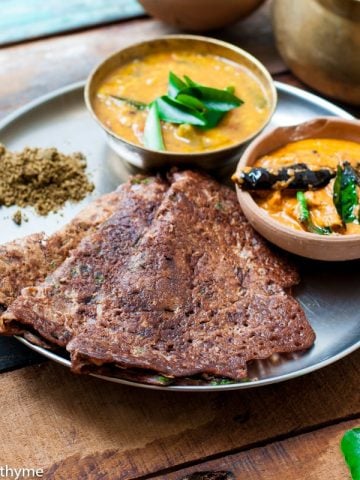
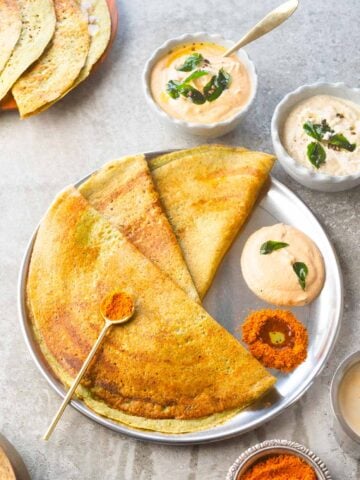
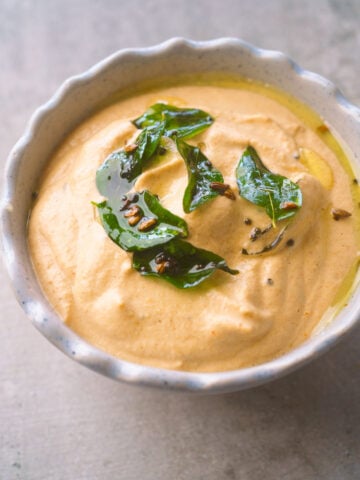
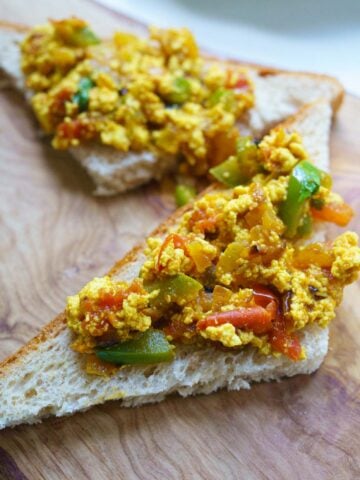
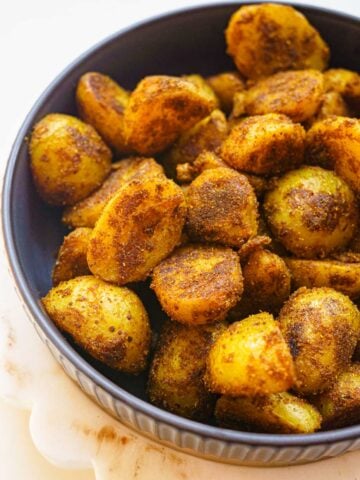
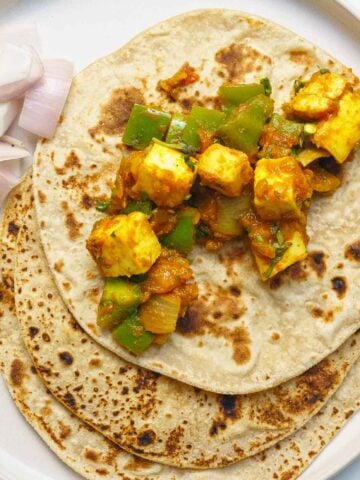
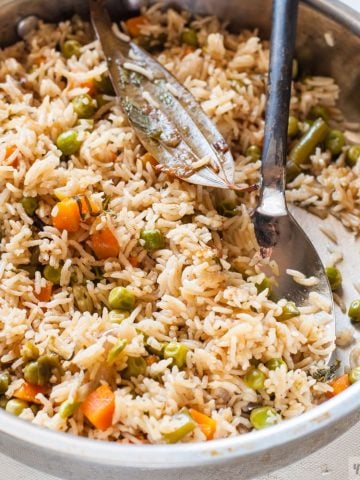
Leave a Reply